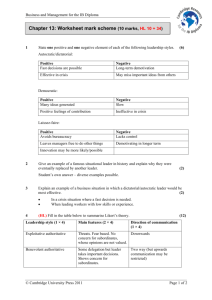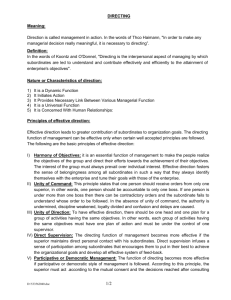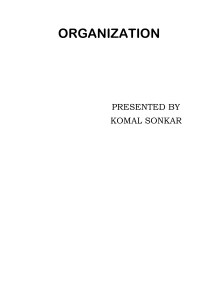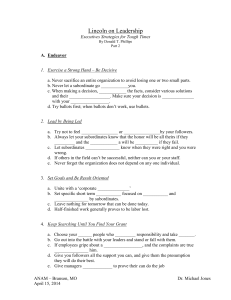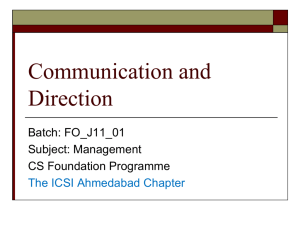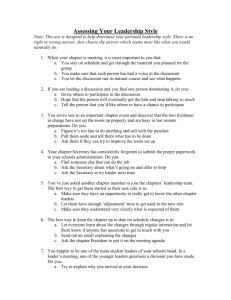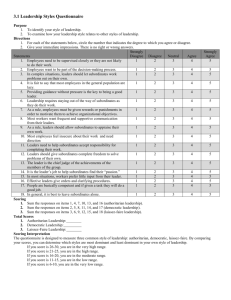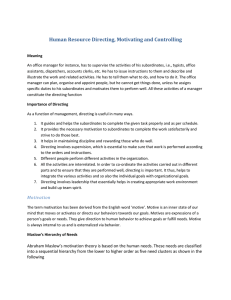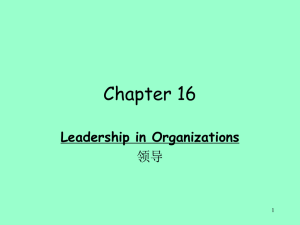DIRECTING
advertisement
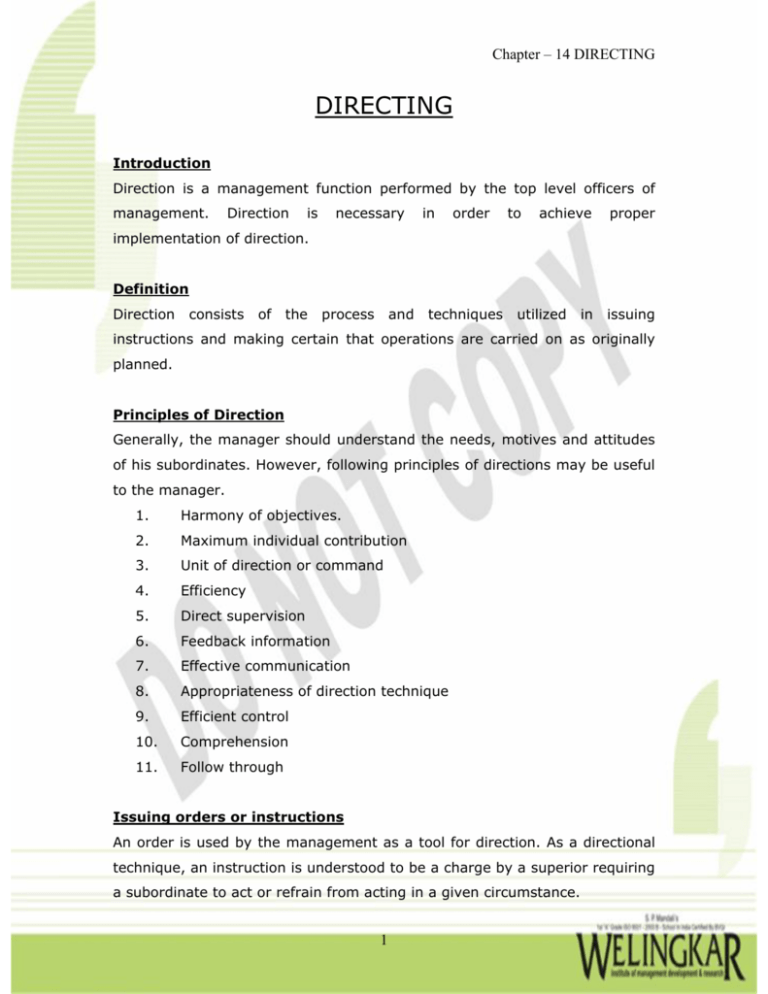
Chapter – 14 DIRECTING DIRECTING Introduction Direction is a management function performed by the top level officers of management. Direction is necessary in order to achieve proper implementation of direction. Definition Direction consists of the process and techniques utilized in issuing instructions and making certain that operations are carried on as originally planned. Principles of Direction Generally, the manager should understand the needs, motives and attitudes of his subordinates. However, following principles of directions may be useful to the manager. 1. Harmony of objectives. 2. Maximum individual contribution 3. Unit of direction or command 4. Efficiency 5. Direct supervision 6. Feedback information 7. Effective communication 8. Appropriateness of direction technique 9. Efficient control 10. Comprehension 11. Follow through Issuing orders or instructions An order is used by the management as a tool for direction. As a directional technique, an instruction is understood to be a charge by a superior requiring a subordinate to act or refrain from acting in a given circumstance. 1 Chapter – 14 DIRECTING Characteristics of a Good Order 1. An order should be reasonable and enforceable over subordinates 2. A clearly defined order should be easily understandable 3. An order should be such a one as to facilitate the achievement of the objectives of an organization 4. An order should be complete in all respects 5. An order should exhort willingness and acceptance from the subordinates 6. A written order is preferable to an oral order 7. Apporoproriate tone is used by the superior while issuing an order 8. An order should specify the time within which a job should be completed 9. An order should be Intelligible Techniques of Direction There are three directions. 1. Consultative direction 2. Free rein direction 3. Autocratic direction 1. Consultative direction • The superior has consultation with his subordinates before issuing a direction. • The consultation is made to find out the feasibility, enforceability and nature of problem. • Ultimately, the superior has the right to take any decision and give the directions. 2 Chapter – 14 DIRECTING 2. Free rein direction • The subordinate is encouraged to solve the problem independently under this direction technique. • Only highly educated, efficient and sincere subordinate are required to apply there direction techniques. 3. Autocratic direction • This is opposite to free rein direction techniques. • Supervisor commands his subordinates and has close supervision. • Now way left to the subordinates to show their initiatives. Importance of Direction Direction is necessary to implement the administrative policies and decisions effectively. Direction provides leadership in a business and it is also concerned with getting cooperation among subordinates. 1. Initiates action 2. Coordinates the group efforts 3. Ensures maximum individual contribution 4. Reduces the reluctance to put up with changes in the organization 5. Provides stability and balance in organization 6. Helps to achieve the objectives of an organization. Characteristics of Direction ¾ Performed by all levels of executives. ¾ Management initiates action through direction ¾ It is continuous throughout the life of the organization ¾ Initially, direction is started at the top level management. ¾ Subordinates do the things as per the original plan. ¾ Direction creates link between preparatory functions and the control functions of management that includes planning, organizing and staffing. 3
